Find Help
More Items From Ergsy search
-

Performing a 12 lead ECG
Relevance: 100%
-

Electrocardiogram ECG
Relevance: 77%
-

Can Ozempic lead to dehydration?
Relevance: 30%
-

Can HPV lead to cancer?
Relevance: 30%
-

Can binge drinking lead to addiction?
Relevance: 29%
-

Can prescription drugs lead to drug offences?
Relevance: 27%
-
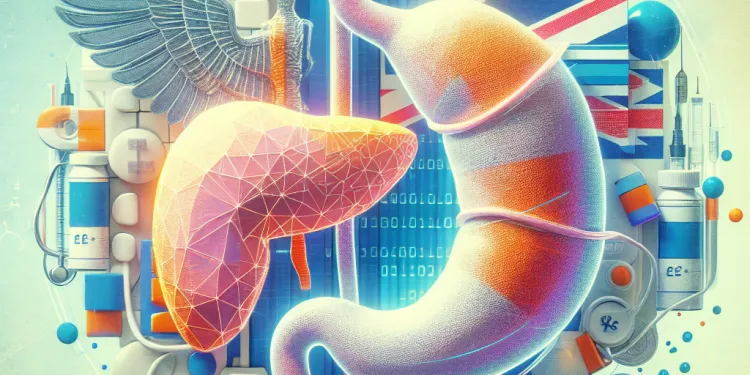
Can Ozempic lead to pancreatitis?
Relevance: 27%
-

Can director disputes lead to company liquidation?
Relevance: 27%
-

Do all mutations in the virus lead to new variants?
Relevance: 26%
-

Can dangerous driving lead to a criminal record?
Relevance: 26%
-
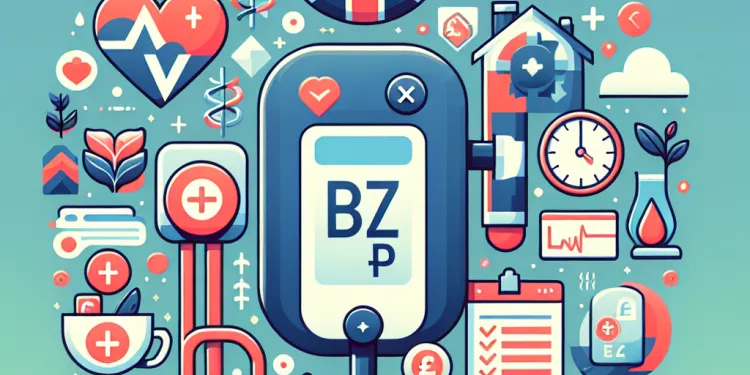
Can high blood pressure lead to other health problems?
Relevance: 25%
-

Can people with autism lead independent lives?
Relevance: 25%
-

Can concussions lead to mental health issues?
Relevance: 24%
-

Can people with HIV lead normal lives?
Relevance: 24%
-

How can phishing attacks lead to social media hacks?
Relevance: 24%
-

Why does H3N2 often lead to more severe flu seasons?
Relevance: 21%
-

GPs Warn Antibiotic Overuse Could Lead to Superbug Crisis
Relevance: 21%
-

Could this social media ban lead to an increase in workarounds by under 16s?
Relevance: 20%
-

Cardiac Physiology Walkthrough
Relevance: 19%
-

Heart Failure : What is heart failure?
Relevance: 17%
-
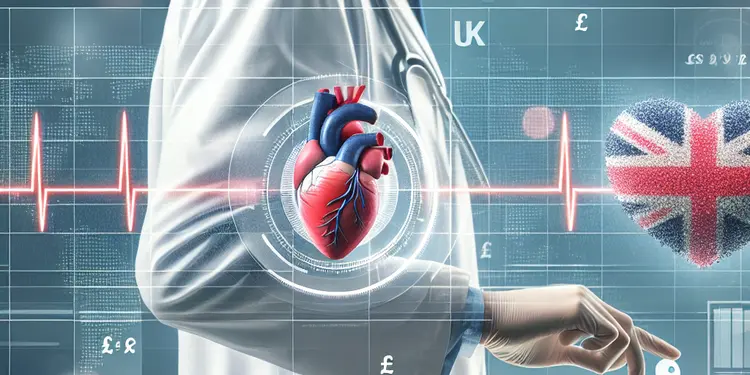
How is heart failure diagnosed?
Relevance: 17%
-

Is it possible to have a heart attack without chest pain?
Relevance: 16%
-

Heart Failure : When the heart becomes stiff?
Relevance: 16%
-

Heart Failure : The normal heart
Relevance: 15%
-

Is my abnormal heart rhythm dangerous?
Relevance: 15%
-

What should I do if I experience symptoms of heart failure?
Relevance: 12%
-

What is heart valve disease?
Relevance: 11%
-

Can the test be performed during my menstrual period?
Relevance: 11%
-

Introduction to coronary angiogram and stenting
Relevance: 11%
-

Before Angioplasty
Relevance: 10%
-
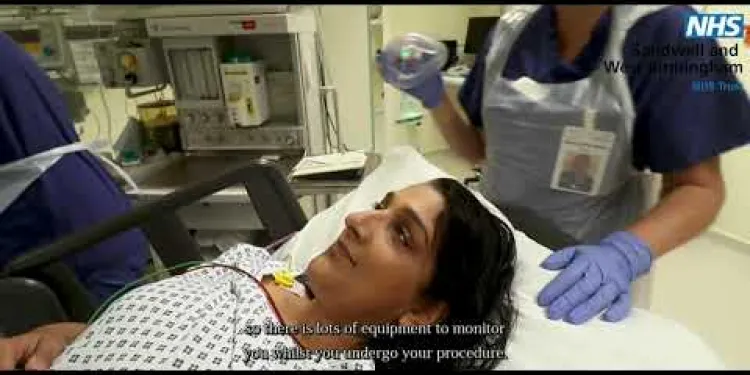
What to expect when visiting our hospitals for surgery | Theatres
Relevance: 9%
-
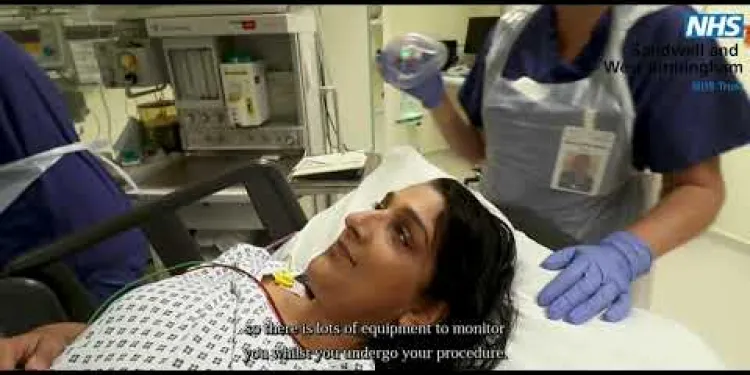
What to expect when visiting our hospitals for surgery | Theatres
Relevance: 9%
-
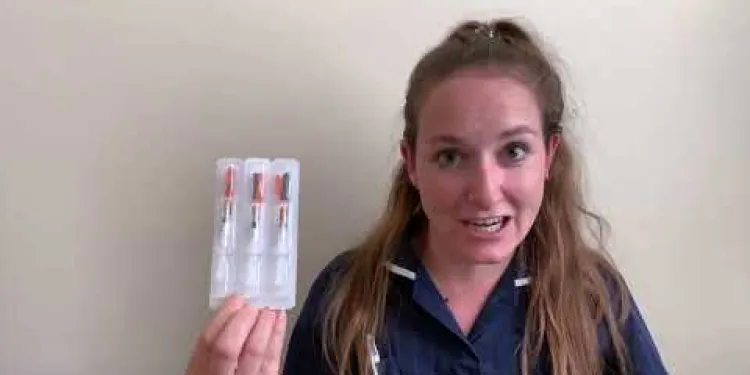
Bariatric Surgery - What to expect when you come to hospital for your operation.
Relevance: 9%
-

Inpatient Surgery at North Bristol NHS Trust
Relevance: 8%
-

What are common causes of director disputes?
Relevance: 7%
-

Heart Failure : Heart failure that cannot pump
Relevance: 7%
-

What specific performance issues led to these refunds?
Relevance: 7%
-

What causes heart failure?
Relevance: 7%
-

What role do unhealthy dynamics play in causing depression?
Relevance: 7%
-

Are there any complications associated with shingles?
Relevance: 6%
Performing a 12-Lead ECG
A 12-lead Electrocardiogram (ECG) is a vital diagnostic tool used to assess the electrical activity of the heart. This guide provides essential steps and considerations when performing a 12-lead ECG in the United Kingdom.
Preparation
Before starting, ensure the patient is relaxed and lying down, preferably on an examination couch or bed. Ask them to remove any jewellery or clothing on the upper torso. Clean the skin where electrodes will be placed to ensure a good electrical connection, using alcohol wipes if necessary.
Electrode Placement
Accurate placement of electrodes is critical for obtaining reliable results. The standard 12-lead ECG requires ten electrodes to be placed on the body as follows:
- Four limb electrodes: one on each arm and leg, usually on the wrists and ankles.
- Six chest electrodes: positioned on the chest in specific locations (V1 to V6).
Here is a brief guideline for chest electrode placement:
- V1: Fourth intercostal space, right sternal border.
- V2: Fourth intercostal space, left sternal border.
- V3: Midway between V2 and V4.
- V4: Fifth intercostal space, mid-clavicular line.
- V5: Horizontal to V4, anterior axillary line.
- V6: Horizontal to V4, mid-axillary line.
Recording the 12-Lead ECG
After connecting the electrodes, ensure all cables are securely attached to the ECG machine. Explain to the patient that they need to remain still and breathe normally during the recording to avoid any artefacts. Press the start button on the machine to begin recording.
Review and Interpretation
Once the recording is complete, review the tracings for clarity and identify any artifacts. Familiarise yourself with the normal ranges of the heart's electrical activity to interpret the results effectively. In the UK, it is common practice for a trained technician or healthcare professional to perform the initial interpretation before passing it on to a specialist if needed.
Patient Aftercare
After the ECG procedure, help the patient remove the electrodes and allow them to dress. Provide reassurance and explain the next steps if any follow-up is required. Ensure they understand if they need to wait for results or if they will be contacted later.
Performing a 12-lead ECG correctly is essential to providing accurate diagnostics for cardiac conditions. Proper preparation, accurate electrode placement, and clear communication with the patient can significantly impact the reliability of the ECG results.
Doing a 12-Lead ECG
A 12-lead ECG is a test to check how your heart is working. It looks at the electricity in your heart. Here is how to do the test in the UK.
Getting Ready
Before you start, make sure the person is calm and lying down on a bed or couch. Ask them to take off any jewellery or clothes from the top half of their body. Clean the skin where you will put the sticky pads. You can use wet wipes with alcohol if needed.
Placing the Sticky Pads
Putting the pads in the right place is very important for the test to work. You need to put ten pads on the person's body:
- Four limb pads: One on each arm and leg, usually on the wrists and ankles.
- Six chest pads: These go on the chest in special spots called V1 to V6.
Here is where to put the chest pads:
- V1: Right side of the chest, between the ribs, near the middle of the chest.
- V2: Left side of the chest, between the ribs, near the middle of the chest.
- V3: Halfway between V2 and V4.
- V4: Left side, between the ribs, in line with the middle of the collarbone.
- V5: On the left side, in line with V4, near the front of the armpit.
- V6: On the left side, in line with V4, in the middle of the armpit.
Doing the ECG Test
Once the pads are on, make sure all the wires are connected to the ECG machine. Tell the person to stay still and breathe normally. Press the start button on the machine to begin the test.
Checking the Test Results
When the test is finished, look at the recordings to make sure they are clear. You need to know what normal heart readings look like. In the UK, a trained person often checks the first results before a doctor looks at them.
Looking After the Person
After the test, help the person take off the pads and let them get dressed. Reassure them and explain what will happen next. Tell them if they need to wait for results or if someone will call them later.
Doing a 12-lead ECG the right way is important for finding heart problems. Getting ready properly, putting the pads in the right places, and talking clearly with the person can help make the test results better.
Frequently Asked Questions
What is a 12 lead ECG?
A 12 lead ECG is a medical test that records the electrical activity of the heart from 12 different perspectives to help diagnose various heart conditions.
Why do I need a 12 lead ECG?
A 12 lead ECG is used to diagnose and monitor heart conditions such as arrhythmias, heart attacks, and other cardiac issues.
How should I prepare for a 12 lead ECG?
There is no special preparation required for a 12 lead ECG, but it is advisable to dress in loose clothing for easy access to your chest area, and avoid applying lotions or creams.
How long does a 12 lead ECG take?
The actual recording of the ECG takes only a few minutes, but the entire process including preparation may take around 10-15 minutes.
What should I expect during a 12 lead ECG?
During the test, small electrode patches will be placed on your chest, arms, and legs. You will need to lie still while the machine records your heart's electrical activity.
Is a 12 lead ECG painful?
No, a 12 lead ECG is a painless test. You might feel a slight discomfort when the electrodes are removed from your skin.
Can I move during the ECG procedure?
It's important to remain still and not talk during the recording to ensure accurate results.
Are there any risks associated with a 12 lead ECG?
A 12 lead ECG is a very safe procedure with no significant risks or side effects.
Who performs a 12 lead ECG?
A trained healthcare professional such as a nurse or a technician typically performs the 12 lead ECG.
Can I eat or drink before a 12 lead ECG?
Yes, you can eat and drink normally before the test unless advised otherwise by your healthcare provider.
Will I need to remove my clothes for a 12 lead ECG?
You may need to remove your upper clothing to allow the electrodes to be placed on your chest. A gown or cover will be provided for your comfort.
How soon will I get the results of my ECG?
The results are usually available immediately after the test, but your doctor will need to interpret them before discussing them with you.
Can a 12 lead ECG detect a heart attack?
Yes, a 12 lead ECG can help detect signs of a current or past heart attack by showing changes in the heart's electrical activity.
Will a 12 lead ECG show all types of heart problems?
While a 12 lead ECG can provide valuable information about your heart's health, it may not detect all heart problems. Further tests might be needed for a comprehensive diagnosis.
What do the 'leads' in a 12 lead ECG refer to?
In a 12 lead ECG, 'leads' are the different perspectives from which the heart's electrical activity is recorded. They are not physical wires but rather different viewpoints constructed by the machine based on the data from the electrodes.
What is a 12 lead ECG?
A 12 lead ECG is a test that looks at how your heart is working.
The test uses wires and sticky pads to look at your heart.
Doctors use this test to check if your heart is healthy.
If you find reading hard, you can ask someone to read it to you.
You can also use an app that reads text out loud.
A 12 lead ECG is a test that helps doctors check how a person's heart is working. It looks at the heart's activity from 12 different angles. This test can help find heart problems.
Why do I need a 12 lead ECG?
A 12 lead ECG is a test for your heart. It helps doctors see how your heart is working. Doctors use it to check if your heart is healthy or if there is a problem.
Some people use tools like pictures or videos to learn better. Ask a friend or family member to help you understand.
A 12 lead ECG is a test that helps doctors check how the heart is working. It looks for heart problems like irregular beats, heart attacks, and other heart issues.
How can I get ready for a 12 lead ECG test?
A 12 lead ECG is a heart test. Here is how you can get ready:
- Stay Calm: Being relaxed helps.
- Wear Easy Clothes: Choose a shirt you can take off easily.
- No Oily Skin: Do not use lotion on your chest before the test.
- Ask for Help: If you are worried, talk to the doctor.
If reading is hard, ask someone to explain it to you. You can also use tools that read the text aloud.
You do not need to do anything special to get ready for a 12 lead ECG. But it is a good idea to wear loose clothes. This makes it easy to get to your chest. Do not put on lotion or cream on your skin.
How long does a 12 lead ECG take?
A 12 lead ECG is a test to check your heart.
This test usually takes about 10 minutes.
If you find reading hard, you can ask someone to read it with you.
Using pictures or videos can also help understand better.
It takes a few minutes to do the ECG test. But getting ready and doing the test can take about 10-15 minutes.
What happens during a 12 lead ECG?
A 12 lead ECG is a test that checks how your heart is working. Here is what will happen:
- You will lie down on a bed or table.
- A nurse or doctor will put small sticky pads, called electrodes, on your arms, legs, and chest.
- The electrodes are attached to wires that connect to a machine.
- You need to lie still and relax while the machine takes a picture of your heartbeats.
- The test does not hurt and only takes a few minutes.
The nurse or doctor will talk to you and answer any questions you have.
For the test, small stickers called electrodes will be put on your chest, arms, and legs. You need to lie still while the machine checks your heart.
Does a 12 lead ECG hurt?
A 12 lead ECG does not hurt.
During the test, a doctor or nurse puts sticky pads on your chest, arms, and legs. These pads are connected with wires to a machine that checks your heart.
You might feel a little cold when the sticky pads touch your skin, but it shouldn’t hurt.
Some people might feel nervous. It can help to take deep breaths and stay calm during the test.
If you have worries, talk to the doctor or nurse. They can tell you more and help you feel better.
No, a 12 lead ECG does not hurt. You might feel a little pinch when the sticky pads come off your skin.
Can I move when having an ECG test?
An ECG is a test that looks at your heart. It is important to stay still during the test. Try to lie down and relax.
Ask the nurse or doctor when it is okay to move again.
You can use a soft toy or listen to calm music to help you stay still.
You need to stay still and be quiet while recording. This helps get the right results.
Are there any risks of having a 12 lead ECG?
A 12 lead ECG is a test to check how your heart is working. It is safe and does not hurt.
Some people might feel a little bit uncomfortable when sticky pads are put on their skin, but it is quick and not painful.
If you are worried, you can ask someone to stay with you for support.
A 12 lead ECG is very safe. It does not have any big risks or bad side effects.
Who does a 12 lead ECG test?
A 12 lead ECG test is done by a doctor or a nurse. They are trained to do this. They will take care of you during the test.
If you are interested, you can ask to see what they do.
Tools like pictures or videos can help you understand more about an ECG. Ask someone to explain if you need help.
A nurse or a technician usually does the 12 lead ECG test.
Can I eat or drink before a 12 lead ECG?
Yes, you can eat and drink before the test. There is no need to change your eating or drinking habits before a 12 lead ECG. Just relax and stay calm for the test.
Tip: If you feel nervous, try taking deep breaths. Ask someone to come with you if you want support.
Yes, you can eat and drink like you usually do before the test. But if your doctor tells you something else, follow their advice.
Do I have to take off my clothes for a heart test?
A heart test is also called an ECG.
You might need to take off some clothes. This is so the doctor can put sticky patches on your skin. The patches help check your heart.
Wear easy clothes to take off, like a loose shirt.
You can bring someone with you to help you feel more comfortable.
You might need to take off your top so we can put special sticky pads on your chest. We will give you a gown or something to cover you to keep you comfy.
When will I know my heart test results?
You might want to ask when you will find out about your heart test, called an ECG. Here is how it usually works:
- The doctor or nurse can tell you when they will have the results. This can be the same day, or it might take a few days.
- Using pictures can help you understand the steps.
- You can ask someone you trust to help you with the information.
You can usually find out the results right after the test. Your doctor will look at them and explain what they mean when you talk.
Can a 12 Lead ECG Show a Heart Attack?
A 12 lead ECG is a test. It checks how the heart is working. The test uses wires and sticky pads on your body. It looks at the heart's beating pattern.
Yes, this test can show if someone is having a heart attack. A heart attack is when the blood to the heart stops. The test can help doctors know if the heart is in trouble.
If you or someone you know has trouble reading, ask for help. You can use simple dictionaries or tools that read aloud to better understand.
Yes, a 12 lead ECG can help find signs of a heart attack now or in the past. It does this by showing changes in how the heart works.
Does a 12 lead ECG tell us about all heart problems?
A 12 lead ECG is a test that looks at your heart. It can give important information about how healthy your heart is. But it might not find every heart problem. You might need more tests to know exactly what is happening with your heart.
What are the 'leads' in a 12 lead ECG?
A 12 lead ECG is a test that looks at the heart. The 'leads' are the different views of the heart. The leads use stickers and wires on the body to check the heart from different angles.
To learn more easily, you can use help like pictures or videos.
In a 12 lead ECG, 'leads' are like different eyes looking at the heart's electrical signals. They are not real wires. The machine makes these views using data from tiny sticky pads called electrodes.
Useful Links
- Ergsy carfully checks the information in the videos we provide here.
- Videos shown by Youtube after a video has completed, have NOT been reviewed by ERGSY.
- To view, click the arrow in centre of video.
- Most of the videos you find here will have subtitles and/or closed captions available.
- You may need to turn these on, and choose your preferred language.
- Go to the video you'd like to watch.
- If closed captions (CC) are available, settings will be visible on the bottom right of the video player.
- To turn on Captions, click settings .
- To turn off Captions, click settings again.
More Items From Ergsy search
-

Performing a 12 lead ECG
Relevance: 100%
-

Electrocardiogram ECG
Relevance: 77%
-

Can Ozempic lead to dehydration?
Relevance: 30%
-

Can HPV lead to cancer?
Relevance: 30%
-

Can binge drinking lead to addiction?
Relevance: 29%
-

Can prescription drugs lead to drug offences?
Relevance: 27%
-

Can Ozempic lead to pancreatitis?
Relevance: 27%
-

Can director disputes lead to company liquidation?
Relevance: 27%
-

Do all mutations in the virus lead to new variants?
Relevance: 26%
-

Can dangerous driving lead to a criminal record?
Relevance: 26%
-

Can high blood pressure lead to other health problems?
Relevance: 25%
-

Can people with autism lead independent lives?
Relevance: 25%
-

Can concussions lead to mental health issues?
Relevance: 24%
-

Can people with HIV lead normal lives?
Relevance: 24%
-

How can phishing attacks lead to social media hacks?
Relevance: 24%
-

Why does H3N2 often lead to more severe flu seasons?
Relevance: 21%
-

GPs Warn Antibiotic Overuse Could Lead to Superbug Crisis
Relevance: 21%
-

Could this social media ban lead to an increase in workarounds by under 16s?
Relevance: 20%
-

Cardiac Physiology Walkthrough
Relevance: 19%
-

Heart Failure : What is heart failure?
Relevance: 17%
-

How is heart failure diagnosed?
Relevance: 17%
-

Is it possible to have a heart attack without chest pain?
Relevance: 16%
-

Heart Failure : When the heart becomes stiff?
Relevance: 16%
-

Heart Failure : The normal heart
Relevance: 15%
-

Is my abnormal heart rhythm dangerous?
Relevance: 15%
-

What should I do if I experience symptoms of heart failure?
Relevance: 12%
-

What is heart valve disease?
Relevance: 11%
-

Can the test be performed during my menstrual period?
Relevance: 11%
-

Introduction to coronary angiogram and stenting
Relevance: 11%
-

Before Angioplasty
Relevance: 10%
-

What to expect when visiting our hospitals for surgery | Theatres
Relevance: 9%
-

What to expect when visiting our hospitals for surgery | Theatres
Relevance: 9%
-

Bariatric Surgery - What to expect when you come to hospital for your operation.
Relevance: 9%
-

Inpatient Surgery at North Bristol NHS Trust
Relevance: 8%
-

What are common causes of director disputes?
Relevance: 7%
-

Heart Failure : Heart failure that cannot pump
Relevance: 7%
-

What specific performance issues led to these refunds?
Relevance: 7%
-

What causes heart failure?
Relevance: 7%
-

What role do unhealthy dynamics play in causing depression?
Relevance: 7%
-

Are there any complications associated with shingles?
Relevance: 6%


